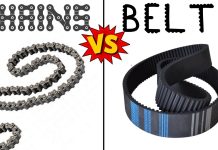Here’s the latest reader question, along with my reply!
Tom asks: I heard you on the Tom Woods show and thought to ask you two questions you probably already answered elsewhere.
1. What is this obsession with automakers and the CVT on the crossovers? I can see a possible benefit on little hatchbacks and sedans. But it seems that all the new crossovers look great but have these underpowered engines with a turbo. I also have heard they burnout after a number of miles and just are more costly than a geared transmission. It seems a little much to put a less powerful CVT into a bigger vehicle and expect it to perform under full load with people and cargo.
2. When are companies like Kia just going to stop teasing us with concepts and just put out the things we want. For example the Kia Soul has had an AWad concept going back to 2013 and. I thing yet. We know they can do hybrids and full electric versions. I know R&D takes time but they know it would sell. Why wait, then?
My reply: Continuously variable (CVT) transmissions have become very common in vehicles of all types, because of the slight efficiency (mileage) advantage over a conventional (geared) automatic or manual transmission. It’s typically 2-3 MPG on average and while that may not seem like a big deal to you (or me) as an individual owner, it is a very big deal in terms of CAFE compliance.
CAFE – Corporate Average Fuel Economy – is the federal mandatory MPG minimum which every car company must meet else get socked with “gas guzzler” fines which are then passed on to buyers in the form of higher prices, which makes a given “gas guzzler” less competitive on the market. It is one of the ways Uncle artificially meddles with the market – and interferes with natural market forces.
There were some reliability/durability problems with the early CVTs, but the ones being made now (and recently, during the past six or seven years or so) appear to be about as reliable as other transmissions. The main issue is the different operating characteristics, which some people (me among them) just don’t like.
In a car with a geared transmission, you shift (or the transmission shifts, if it’s a conventional automatic) from one gear to the next. Each gear is a fixed ratio relative to the others, designed to alter mechanical leverage to increase vehicle speed while reducing the engine RPM needed to maintain progressively higher vehicle speed, or to increase mechanical leverage for faster acceleration up to speed.
In a CVT, of course, there are no fixed gears to shift. The transmission continuously varies the effective drive ratio (leverage) via pulleys/belts or some other arrangement. It’s basically every ratio in between and including say first and second and second and third (and so on) – without the need to mechanically “step” up (or down) from one fixed gear ratio to the next highest or next lowest.
So, there’s no shift shock and a CVT can react very quickly to acceleration demands. But the way the CVT-equipped vehicle accelerates is noticeably different as a result. It feels like a turbine, almost. A sensation very similar to an airplane’s take-off roll. The engine races and the car (or plane) accelerates.
The engine in a CVT-equipped car will sometimes stay at or near redline as long as you keep the accelerator pedal to the floor; in a car with a geared transmission, engine RPM will generally decrease as the transmission shifts up through its forward gears.
The tendency of a CVT-equipped car’s engine to rev and stay revved during acceleration is more pronounced in cars with borderline underpowered engines – especially hybrid cars.
For this reason, many of the newest CVTs have been set up to mimic the shift-feel of a conventional automatic. Nissan makes some very good ones, by the way.
On the other thing – concept cars not being produced, etc. Keep in mind that these are concept cars... which means they are basically just show cars and made by hand to demonstrate an idea and gauge possible interest. It’s up to the automaker to decide whether it makes sense to transition a concept car into a production car!
Keep in mind, too, that concept cars do not have to meet federal safety and emissions standards. Production cars do – and that often entails major changes from what you saw on the car floor show to what you see on the dealer’s lot.
. . .
Got a question about cars – or anything else? Click on the “ask Eric” link and send ’em in!
If you like what you’ve found here please consider supporting EPautos.
We depend on you to keep the wheels turning!
Our donate button is here.
If you prefer not to use PayPal, our mailing address is:
EPautos
721 Hummingbird Lane SE
Copper Hill, VA 24079
PS: Get an EPautos magnet (pictured below) in return for a $20 or more one-time donation or a $5 or more monthly recurring donation. (Please be sure to tell us you want a sticker – and also, provide an address, so we know where to mail the thing!)
My latest eBook is also available for your favorite price – free! Click here. 












CVT feels to me like an old Powerglide with burnt out clutches that is just about to leave you stranded.
Also feels like driving a snow mobile. There’s a significant lag between punching the gas pedal and getting response other than noise.